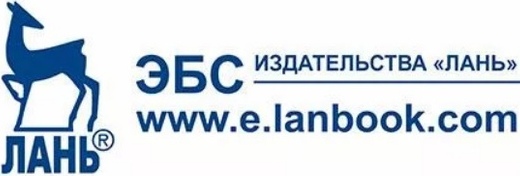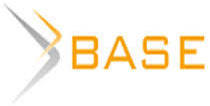SCIENTIFIC CONFERENCE “TRADITIONAL AND CONTEMPORARY IN ART AND EDUCATION”
Abstract
The report provides an overview of the first international scientific-professional conference organized by the Faculty of Arts of the University of Pristina with temporary accommodation in Kosovska Mitrovica. Here a detailed list of participants, topics of reports and discussions is presented, showing the perspectives of international cooperation in research and educational art practices.Keywords: cultural education, traditions, contemporary research, new art, upbringing, problems heritage, Kosovo
Organization and participants of the scientific conference
The Faculty of Arts in Zvečan‒Kosovska Mitrovica, hosted from 4th to 6th November 2016 the first international scientific conference titled Traditional and contemporary in art and education. This is the first scientific conference organized by the Faculty of Arts in Zvečan-Kosovska Mitrovica and is a particularly important event in the advancement of the activities and affirmation of this higher education institution[1]. The initial idea and the intention of the creators and organizers of this conference, to gather in one place experts in various fields of science of visual, musical and dramatic arts, was supported by numerous eminent researchers from home and abroad. Even though in its infancy, the gathering brought together 102 participants from 14 European countries: Serbia, Bosnia and Herzegovina, Republic of Srpska, Croatian, Russia, Greece, Italy, Germany, Austria, France, Polish, Belgium, Hungary and the United Kingdom. In addition to the prominent researchers in the fields of science of art (art historians, art critics, musicologists, ethnomusicologists, music theorist and pedagogue, playwrights, director, choreographer) and other socio-humanistic orientation (philosophers, political scientists, anthropologists, sociologists, psychologists, ethnologists, philologists, slavists, historians), the opportunity to present the results of their scientific work also had young researchers students of master and doctoral studies. The participants come from a variety of domestic and foreign scientific, research and educational institutions: universities, faculties, academies of sciences and arts, conservatories, colleges, institutes, museums, libraries, primary and secondary schools[2].
In addition to scientific, the gathering had the character of the expert meeting-conference. Sessions dedicated to art education and upbringing, which exhibited works of university professors of methods of teaching art and methodology in music teaching, the Institute for the Advancement of Education of the Republic of Serbia approved as a form of professional development for those employed in education (teachers in preschools, classroom teachers, subject teachers in primary, secondary vocational and secondary schools, teachers of vocational subjects in primary and secondary art schools‒music, visual arts, ballet).
Program committee consisted of 24 eminent experts from Serbia, Greece, Russia, Poland, Italy, Great Britain, Bosnia and Herzegovina and Republic of Srpska. Members of the Organizing Committee were professors, assistant professors, assistants and associates of the parent university.
Program concept was further complemented and enriched by the accompanying cultural programs that were designed as an overview of the artistic activities of the Faculty of Arts in Zvečan-Kosovska Mitrovica and activities that teachers, staff and students of this faculty contribute to the promotion, fostering and preserving the rich Serbian cultural heritage in Kosovo and Metohija[3].
The meeting was financially supported by the Ministry of education, science and technological development of Republic of Serbia; Office for Kosovo and Metohija of the Government of the Republic of Serbia; The University of Priština with temporary seat in Kosovska Mitrovica and the Faculty of Economics in Priština with temporary seat in Kosovska Mitrovica. Media support to the scientific meeting was provided by the Third Channel of Belgrade Radio and TV Most from Zvečan.
Conference grand opening
The scientific conference was opened by Dr Srećko Milačić, Rector of the University of Priština with the temporary seat in Kosovska Mitrovica. Professor Milačić first welcomed the participants and guests of the conference, and then pointed to the importance this conference has given the overall scientific, artistic and educational activities and mission that the University in Kosovska Mitrovica, and the Faculty of Arts as a part of it, have in Kosovo and Metohija. Attendees were addressed by the Chairman of the Program Committee, Dean of the Faculty of Arts MSc Zoran Furunović, and President of the Organizing Committee, Vice-dean for teaching MSc Aleksandra Trajković. On behalf of the hosts, they welcomed the attendees and expressed their undisguised satisfaction due to high interest and the response of researchers to take part in this session, which significantly contributes to the affirmation of the Faculty of Arts at home and abroad. Wrapping up their commemorative address, the hosts wished the participants that this meeting would successfully facilitate the exchange of knowledge and experiences, discovery of new insights and ways of observing certain problems, as well as in establishing contact and cooperation, both at the personal and institutional level.
The working part of the meeting
The conference exhibited a total of 78 works. The authors presented the results of their research carried out within the following thematic areas and the sub-groups offered:
1. Cultural and artistic heritage of Kosovo and Metohija (Preservation of tradition and national identity in Kosovo and Metohija; Art and education in Kosovo and Metohija from Middle Ages to the present day; Problems concerning research and preservation of Kosovo and Metohija's heritage; Medieval Monuments in Kosovo on the UNESCO List of World Heritage in Danger–problems of contemporary cultural heritage protection; Traditional and spiritual songs from Kosovo and Metohija-modes of preservation).
2. Traditional and contemporary approaches to artistic education and upbringing (Contemporary methods of teaching arts in children education and upbringing; Contemporary art and artistic education methodology; The importance of artistic education and upbringing in preschool institutions, elementary and high schools; The role of tradition in creation of educational processes).
3. Art as a space of memory (Tradition recreation/interpretation/recycling in contemporary art; Artist's position in contemporary society; Traditional techniques in new artistic practices; New approaches in heritage preservation; Museums as places of memory; Heritage and new media; The role of film in creating spaces of memory; Heritage and popular culture).
4. Traditional and contemporary in artistic dance (Artistic dance education; Contemporary dance and gender theories; Gender, body, dance; Dance as a space of feminine expression; Ritualistic traits in contemporary theatre of movement; Choreographic imagination, composition and dancing techniques; Correlation of national dances in ballet heritage on the territory of former Yugoslavia).
The working part of the scientific meeting began with a plenary session.
Musicologist Dr Sonja Marinković, professor Faculty of Music in Belgrade, exhibiting her work on the theme of Folklore as Redžo Mulić’s inspiration in the Symphony No. 2 “Kosovska”, opened the plenary session. It was followed by the presentation of the musicologist Dr Nebojša Todorović, professor of the Faculty of Arts in Niš, titled Professor Marko Savić’s pedagogical contribution to the development of pianism in Kosovo and Metohija. In the final plenary lecture, professor Dr Angelina Milosavljević Ault, from the Faculty of Media and Communications in Belgrade, presented her paper titled Collecting Past as a Discipline of Heritology. Between an Impulse and a Concept.
The plenary session was followed by work in thematic sections.
Cultural and artistic heritage of Kosovo and Metohija was the title of the first section, in which the participants presented 16 papers. This section was due to the number of registered exhibitors, divided into two sessions. Within each session, researchers discussed a variety of topics concerning the connection to the cultural and artistic heritage of Kosovo and Metohija ‒ from those focused on preserving the cultural heritage of Kosovo and Metohija and difficulties in interpreting the cultural heritage of this area, Serbian medieval architectural heritage in Kosovo and Metohija as a respectable inclusion into the tourist offer, the aspects of identity related to polarized urban space in the example of Kosovska Mitrovica, those which designate the traditional music as a part of cultural identity of Serbs in Sredačka župa and models of preservation of the traditional song from Kosovo and Metohija, to the themes of Serbian language and literature which researched poetic еlements in the structure of Saint Petar Koriški Hagiography, semantics of herbs in the folk literature of the Serbs from Kosovo and Metohija, as well as the discrepancy between declarative and actual care for the Serbian language in the example of ergonomy of the northern part of Kosovska Mitrovica.
In the second section, called the Traditional and contemporary approaches to artistic education and upbringing, 22 works were presented. This section also due to the large number of exhibitors was divided into two sessions (Session 1‒ musical art and Session 2‒visual arts). With works spanning all levels of education, from preschool to higher education, music and art pedagogues discussed many significant issues related to the thematic area: using artistic music in preschool teaching–from tradition to innovation; effects of using folk songs and dances in teaching; cultivation and preservation of Serbian cultural and national identity through music as a school subject in elementary schools; national musical creativity Kosovo region, and other ethnic areas, and the possibility of using this material in teaching solfeggio; development of music pedagogy and higher music education in various regions in Serbia; the influence of tradition on creativity and artistic expression of first grade primary school children; the importance of early children’s drawings for the understanding of their inner experience; contemporary methodological concepts and teaching systems in art classes; the possibility of teaching of art history in secondary schools, according to artistic-pedagogical conceptions of Christo and Jean-Claude; the importance of art education for the formation of personality and more.
Within the section entitled Art as a space of memory, which was divided into three sessions, 30 works were presented. Within this section, the largest number of researchers dealt with the issues related to the museum and heritage topics such as: the role of new media in contemporary museums, museum in the age of digital art, protection of immovable cultural heritage‒the use of digital technologies, cyber museum‒a look from the other side of the screen, muzealization as hermeneutic circle, museality‒the origin and heritage of an idea and more. Authors in the field of science of musical art dealt with the following topics: the recreation / interpretation / recycling of Serbian mediaeval tradition in contemporary music, musical heritage as a guardian of national identity, cultural heritage and popular culture at music festival Guča, legacy of Mokranjac in the works of other composers of garlands in the second half of the XX century and more.
In the fourth section, which has been named Traditional and contemporary in artistic dance, 7 of the works were presented. The authors of these works have with the study of forms of contemporary dance, choreographic interpretations of the dance heritage of Kosovo and Metohija, the choreographic and choreodramatic work of Mats Ek, the role of tradition in the creation of educational processes in acting pedagogy and development of higher education in the field of artistic dance in the Republic of Serbia.
The official languages of the conference were Serbian, Russian, English, and those that are official in the countries that made up the former Yugoslavia. Some of the local authors exhibited in the English language, or prepared a presentation in English, and exhibited in Serbian, so that the foreign participants can successfully track their presentation.
Besides the Summary of abstracts, which is printed for the conference, publishing the Summary of the works is in plan, which will be contain all exhibited works that receive positive reviews.
Conclusion of the conference
At the official closing of the event, which was held on Sunday, moderators submitted reports on the work and conclusions reached in the framework of the sessions they chaired. The conference was rated as very successful, and especially praised for its seamless preparation and organization. It was concluded that the value of this meeting, among other things, was contributed to by the large number and variety of current topics discussed by the participants in the meeting as part of their presentations. Referents, starting from different theoretical assumptions, opened numerous questions in their papers and discussions, but also offered comprehensive answers to questions. It was pointed to the great importance of the ability of direct communication between exhibitors (university professors) and teachers who participated in the conference as a form of professional development. Through interest in the work of methodical sessions and active participation in discussions by educators, teachers showed that they monitor new developments in education and are very interested in their professional development, as well as seeing that of the Faculty of Arts is educational institution where their particular interests and needs can be fully answered. This was an important step in creating a good cooperation and trust between preschools and schools on the one hand, and the Faculty of the Arts in Zvečan, on the other. In addition to the conclusions, some suggestions were made regarding future activities, with a sincere desire that this scientific conference becomes a tradition. Giving thanks to the moderators and participants for contributing to the success of this scientific conference, prof. Dr Saša Božidarević in his closing argument expressed hope that the results achieved and new acquired experiences will influence an opening of a new chapter in the development of scientific thought at the University of Kosovska Mitrovica and contribute positively to its international affirmation.
[1]Faculty of Arts in Priština with temporary seat in Zvečan‒Kosovska Mitrovica is an institution that realizes the unity of educational, artistic and scientific research within the three departments: The Fine Arts, Music and Dramatic Arts. The Faculty successfully conducts Bachelor and Master degree studies in accordance with the accredited study programs. Faculty of Arts was founded in 1973 in Priština, as the Academy of Fine Arts and the part of the then University of Priština. Two years later, in 1975, work began in the Music section. Then the title of the Academy of Fine Arts became Academy of Arts, and since 1986 this institution bears the name of the Faculty of Arts. Department of Dramatic Arts was established in the 1989/90 school year. Rising faculty development was interrupted by the unpleasant events on the political scene. These events determined the fate of the Faculty of Arts, who, together with the Serbian people and the University of Priština, in May 1999 was expelled from Kosovo and their home seats. Then begins the difficult and uncertain refugee travel for the students and teachers of the Faculty of Arts‒from Leposavić (a small town in the northern part of Kosovo) over Raška (town in Serbia) to Varvarin (small town in Serbia), where the conditions for the operation of a higher education institution, as the Faculty of Arts, was on the verge of impossible. At the beginning of the academic year 2001-2002, in accordance with the decision of the Government of the Republic of Serbia, Faculty of Arts was returned to the northern part of Kosovo‒in Zvečan. Despite the poor spatial and material conditions, and work without basic teaching resources, with great effort, sacrifice and enthusiasm of students and professors of the faculty, teaching is conducted regularly. In 2007, by obtaining use of a great part of the new building in Kosovska Mitrovica, the adaptation of existing space in the building of the deanery in Zvečan and in particular the purchase of space for the Gallery of the Faculty of Arts, created the conditions for decent work of a higher education institution, which contributed significantly to improving the quality of studies and the growing social recognition for the work of the Faculty.
[2]University of Priština with the temporary seat in Kosovska Mitrovica (Faculty of Arts, Faculty of Philosophy, Teachers’ Training Faculty, Faculty of Technical Sciences); University of Belgrade (Faculty of Philosophy, Faculty of Philology); University of Arts in Belgrade (Faculty of Dramatic Arts, Faculty of Applied Arts, Faculty of Music, Faculty of Fine Arts); University Singidunum in Belgrade (Faculty of Media and Communications); University of Novi Sad (Faculty of Philosophy, Centre for Gender Studies); University of Kragujevac (Faculty of Philology and Arts); University of Niš (Faculty of Arts); University of Banja Luka (Faculty of Political Sciences, Academy of Arts); University of East Sarajevo (Music Academy, Faculty of Pedagogy in Bijeljina); University of Zagreb (Faculty of Humanities and Social Sciences); University North, Koprivnica; Chung-Nam National University, South Korea; Université Catholique de Louvain (Louvain-la-Neuve); Eötvös Loránd University Budapest; University in Gdansk (The Stanislaw Moniuszko Academy of Music); University in Edinburg (Edinburgh College of Art); Petrovskaya Academy of Sciences and Arts; École des Hautes Etudes en Sciences Sociales, Paris; Conservatoire Eric Satie, Le Blanc-Mesnil; Austrian Academy of Sciences, Vienna; College of Fine and Applied Arts in Belgrade; College of vocational studies for pre-school teachers in Kikinda; College of Applied Studies in Economy in Peć–Leposavić; Hungarian Dance Academy, Budapest; Vocational College for Education of Preschool Teachers and Sport Trainers in Subotica; Vocational College for Education of Preschool Teachers in Pirot; College of vocational studies for preschool teachers “Mihailo Palovˮ, Vršac; Institute for Literature and Art, Belgrade; Institute for the Protection of Cultural Monuments of the Republic of Serbia; Institute for the Study of Cultural Development of the Republic of Serbia; The Provincial Institute for the Protection of Cultural Monuments Petrovaradin–Novi Sad; Institute of Ethnology and Folklore Research, Zagreb; Institute for Graphic Design, Milan; Institute of Technology and education in Athens; Belgrade City Museum; National Library of Serbia; Music School “Vladimir Đorđevićˮ, Belgrade; Music School “Mihailo Vukdragovićˮ, Šabac; School for Elementary Music Education, East Sarajevo; Stevan Stojanović Mokranjac Music School in Bijeljina; Primary School “Slavko Rodić”, Lazarevo.
[3] The first day of the event, following the opening act, held a concert and presentation titled Musical and dance heritage of Kosovo and Metohija. Firstly, the authors of the project‒ ethnomusicologists Dr Mirjana Zakić and Dr Sanja Ranković, with audiovisual presentation (in Serbian and English) exhibited the results of their multi-year and extensive ethnomusicological field research of traditional Serbian music and dance heritage in Kosovo and Metohija. After a very interesting and inspiring presentation by the authors, followed a concert of traditional folk songs and dances of Kosovo and Metohija performed by vocal soloists and instrumental performers (amateurs)‒associates in the aforementioned study, and members of the ensemble Venac from Gračanica. The second night, following the artistic program, the conference began with the opening of the exhibition titled Ornament/synthesis of form, function and structure of the redundant, authored by students and professors of the Fine Arts section. After opening, the song Dečan bells or the feast of the heart, by the most famous poet of Kosovo and Metohija, Darinka Jevrić, was recited by Borjanka Ljumović, assistant professor at the Drama department. Concert of professors and associates of the Music section, where they performed compositions by Serbian authors, finished the artistic program of the conference.

















Reference lists
The references will appear later